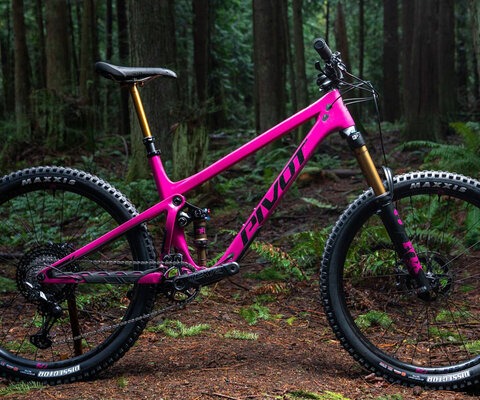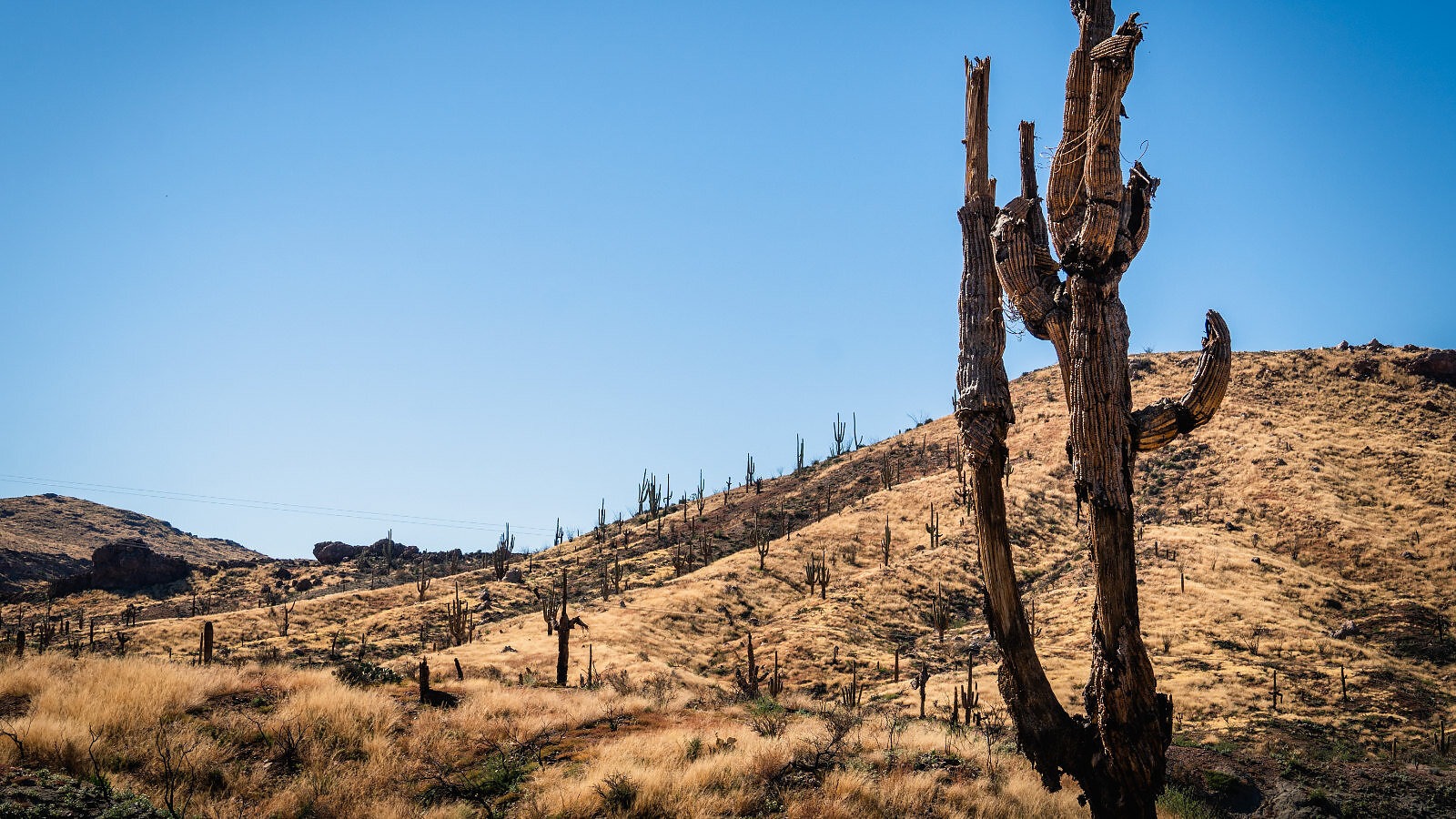
Desert Invasion Can the Arizona Trail Withstand Climate Change?
Words by Kait Boyle | Photos by Eszter Horanyi
I winced, gritted my teeth and curled my fingers behind my brake levers as I pedaled straight into a thicket of pigweed, catclaw acacia and seedy grass.
Thorns tore at my forearms and shins while the stickers of the pigweed rubbed against my open wounds and deployed their seeds onto every piece of fabric they could catch. The Arizona Trail 300 (AZT300), a self-supported point-to-point race on the southern 300 miles of the 800-mile-long Arizona Trail (AZT), had just begun on a pleasant October morning though I hadn’t seen a ribbon of dirt trail in hours.
I knew my race was going to be slower than in years past, but this was shaping up to be one of the more absurd experiences on my bike I’d ever signed up for. Before the event, a historically wet monsoon fell after seasons of record-breaking droughts and invasive species of weeds and grass had taken hold of the desert floor.
The 2021 AZT300 was also my first multi-day ultra since 2018. A traumatic car accident at the end of that year landed me in an ICU wondering if I’d ever walk again, let alone race. What followed was the longest, hardest endurance journey I’ve ever tackled and after my hiatus from the trail, I was back to catch up with an old friend. In the face of a rapidly changing climate and with my accident on my mind, it quickly became apparent that the AZT and I have each been fighting our own battles these past few years. I knew the trail had changed as much as I have, but I was curious to see exactly how fires, floods, brutal drought and torrential storms are affecting one of the most stunning stretches of trail in North America.
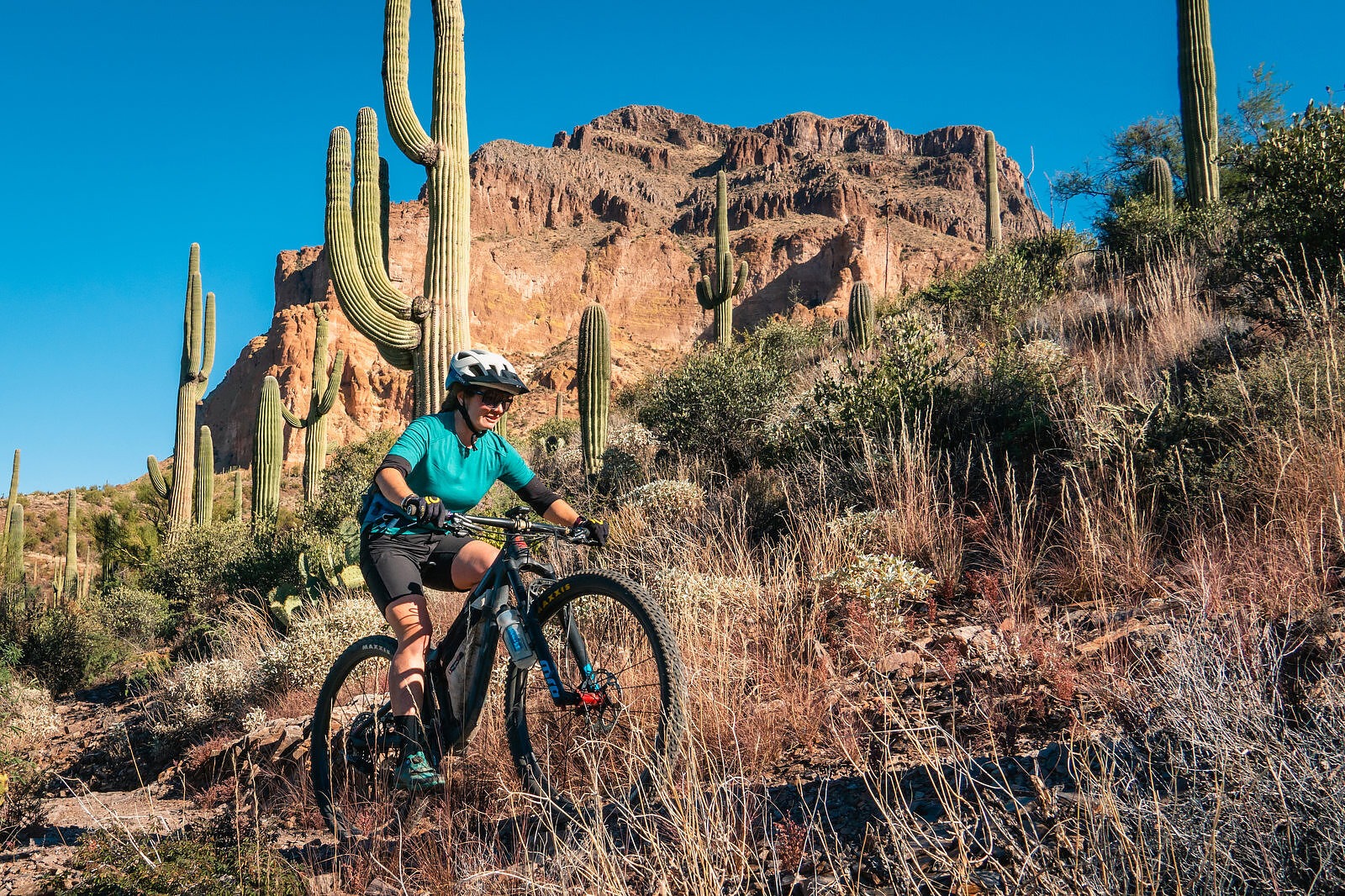
I love the AZT. In the Gila River canyons, saguaros tower over steep slopes while brittlebush, catclaw acacia, fairy dusters, barrel cactus, mariposa lilies, globemallow and cholla grow between rocks. Each spring the rocky hills burst with color as desert plants bloom. Across the steep, cactus-covered slopes and around towering volcanic spires, a beautiful ribbon of singletrack makes a remarkable and unlikely journey up the canyon and over the divide of the Mineral Mountains before winding down to Picketpost Mountain which marks the finishing stretch of the AZT300.
It was here, in March 2011 as a new bikepacker, I rode my 26-inch steel Spot singlespeed with V-brakes, the vivid colors of Sonoran Desert wildflowers providing a backdrop as I pushed my bike up most of the climbs. And it was here, years later, that I set the fourth fastest time on the AZT300 course. During that ride I realized that on bikes and over long distances on technical trails, women can play on a level field with the fastest men. As a five-foot-two-inch tall 31-year-old female, this remains one of the most empowering realizations I’ve ever had. So powerful, in fact, that it gave me the confidence to leave my full-time job teaching adventure education and pursue a path as a professional cyclist and advocate for mountain biking and the landscapes through which we ride.
Now, as I heaved and scratched my way through my 2021 AZT300 attempt, another realization was becoming clear; the AZT is hurting.
In June, the Telegraph Fire tore across southern Arizona. The wildfire, which investigations revealed was most likely caused by Arizona Air National Guard fighter jets, engulfed 180,757 acres of the Sonoran Desert, threatening the towns of Superior and Globe and burning 18 miles of the AZT and the iconic Picketpost Mountain. Fire and drought are naturally occurring in the American Southwest, but climate researchers have identified that over the past 50 years temperatures have risen at a rate parallel to the global temperature rise while precipitation amounts have lowered. In contrast to prior, shorter periods of warming in the climate history of the Southwest, the warming that the region experienced during the past 50 years is presenting as warmer spring and earlier high summer temperatures with longer periods of drought between precipitation events. In a region where the natural precipitation regime is biannual, warmer springs and summers are causing the landscape to dry more rapidly, priming the landscape for fires that can ignite parched forests, scrublands and grasslands well before the monsoon season soaks the landscape.
Now, as I heaved and scratched my way through my 2021 AZT300 attempt, another realization was becoming clear; the AZT is hurting.
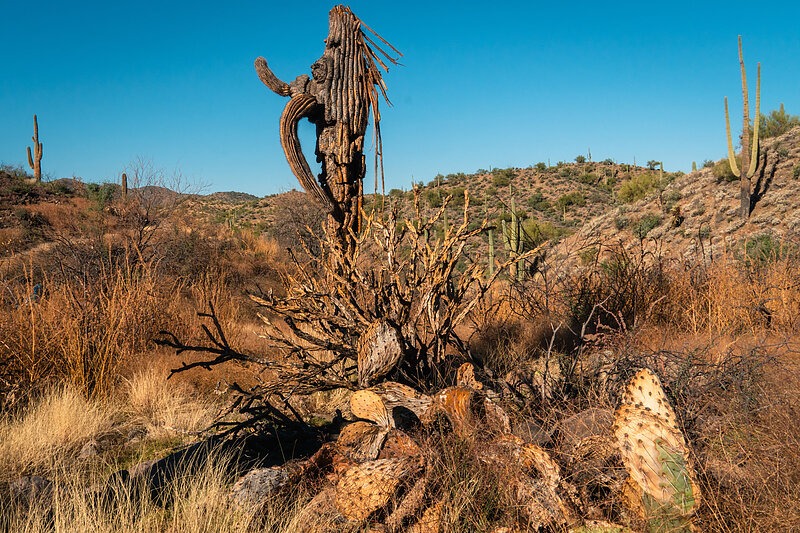
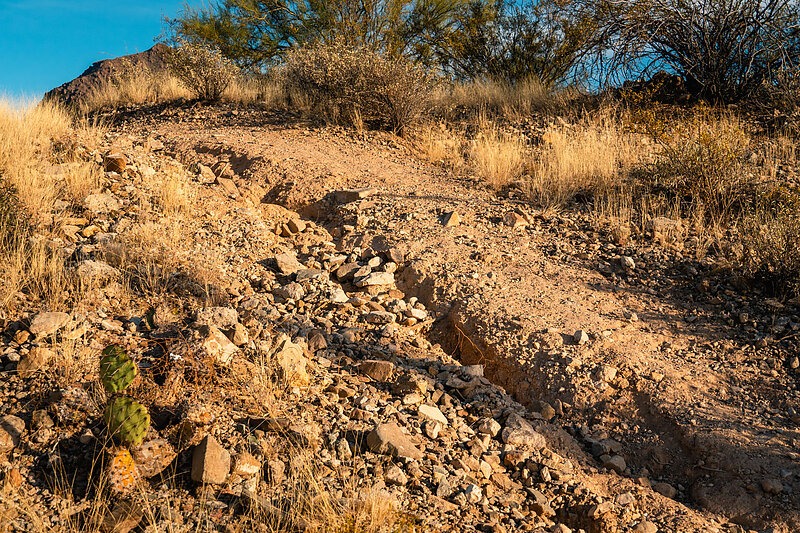
“The greatest changes in drought length have taken place in the desert Southwest,” says Joel Biederman, who works as a research hydrologist at the USDA’s Southwest Watershed Research Center in Tucson. “The average dry period between storms in the 1970s was about 30 days, now that has grown to 45 days.”
In parallel to the problem of longer dry spells, a steady rise of the average temperature in the region (1.5 degrees since the mid 1970s), growing variability in seasonal weather trends and an alarming increase in the number of extreme droughts and rain events are also threatening the Southwest. During the summer of 2020, a record-setting heat wave scorched southern Arizona. This drought was then compounded by the driest monsoon season in 120 years of record—Tucson received just 1.6 inches. The subsequent winter exacerbated the drought when the snowpack peaked at only 63 percent of average and then, this summer, a historically wet monsoon season dumped over a foot of rain on the parched desert.
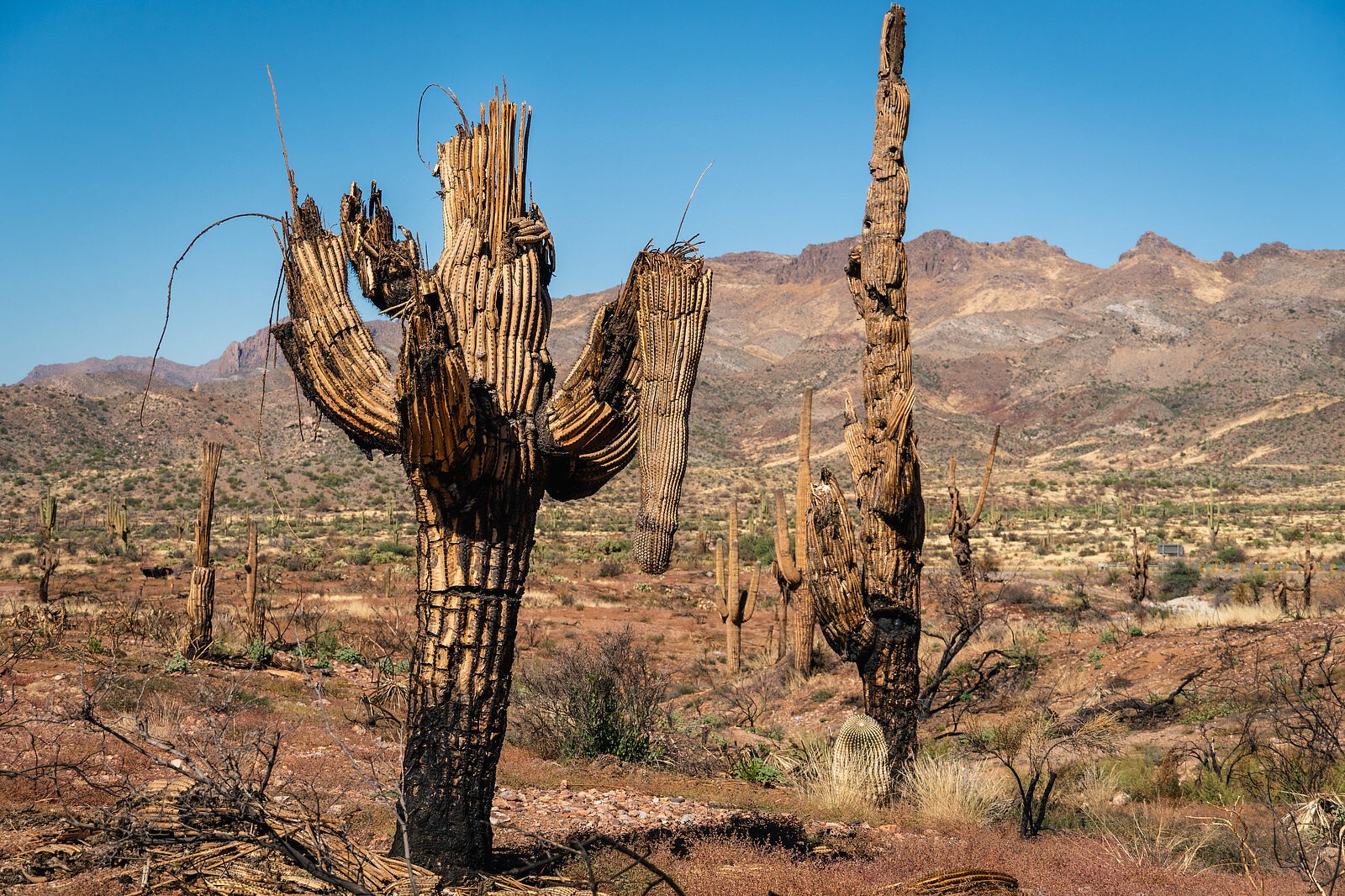
As droughts worsen and fire season extends in duration and intensity, land managers in the Southwest face immense challenges for how to best manage wildfire season to mitigate risk to the communities across the state, protect watersheds, prevent flooding, promote clean air and preserve wildlife habitat. The increasingly common approach is for land managers to enact blanket closures of national forests, restricting all access to those public lands to prevent catastrophic wildfires during peak season. As the Telegraph Fire raged on in June 2021, four of Arizona’s five national forests, and most state lands, closed. When the fire was at its worst, 60 percent of the AZT shut down and, when the Telegraph Fire finally simmered in early July, it ranked sixth largest in Arizona’s history. Four of the 10 largest fires recorded in Arizona have occurred since 2019, six have occurred in the last 10 years and all 10 have occurred in the last 20 years.
The impacts of these fires on trails are immeasurable. Destabilization of soils and increased erosion following storms are common. Fires also burn old-growth vegetation that keep invasive grasses and shrubs at bay; these invasive grasses and shrubs are then the first to take hold of the burned soil and quickly blanket the landscape with plants that are more prone to spreading fire than native vegetation, thus creating a viscous cycle. Burned trees fall by the thousands across trails, creating deadfall hazards and arduous, expensive maintenance for trail organizations. Scars across the landscape eliminate shade for recreationalists and vital habitat for species.
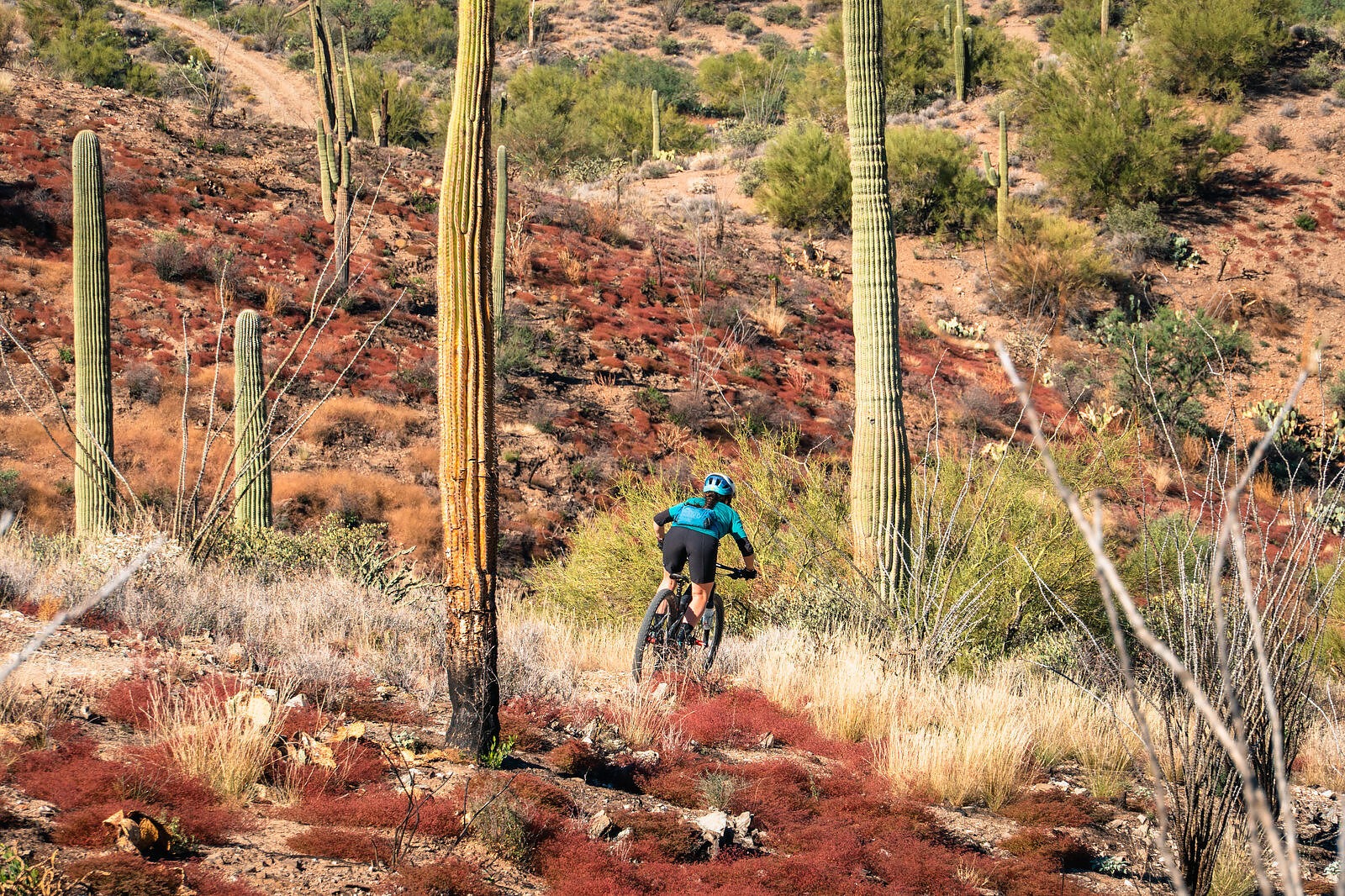

The first section of the AZT300 that traverses the Canelo Hills is notoriously rugged, but after years of riding those challenging 30 miles in both spring and fall, the recent conditions in October were like nothing I’ve experienced before. Months prior, Lael Wilcox and I yipped in delight, marveling at how smooth and flowy the trail was. Now, I was riding through shoulder-high weeds with hardly any dirt in sight. Occasional stretches of grass matted down by cows or hikers, neither of whom seemed to be having any more success navigating the true route of the AZT than I, was the closest thing to a trail.
With no other real option (other than stop and have a temper tantrum), I bumbled on, continuing to grimace, wince and whimper as my skin grew angrier at the desert plants. The temperature continued to rise and I was running low on water. I planned to refill a few hours into the ride at a well-supplied stock tank which, just days before, had been reported as containing water. To my surprise, the tank was dry. With the next available water almost three hours away, and the desert heating up, I pedaled on wondering how a water source could be dry following the wettest summer on record. In an already dry landscape, staying hydrated on the AZT continues to be the greatest challenge for anyone who travels the trail. Natural water sources on the AZT are drying up as less annual precipitation falls, particularly in the winter. Winter precipitation is more efficient for recharging aquifers because snow and light rain allow the ground to absorb moisture whereas heavy rainfall dumps water too quickly for the dry soil to absorb. This causes most monsoon rain to runoff downstream in the form of flash floods.
Recognizing the dire need for water in the desert, the Arizona Trail Association (ATA) installed, in 2019, a rainwater collector in the middle of a particularly remote 21-mile section of the AZT that has regularly been a site for heat-related illness and dehydration-caused wilderness rescue efforts. The tank has a valve for filling bottles and, when full, it overflows into a tank accessible for wildlife. The innovation of this project shows that creative and strategic action is needed to preserve the AZT as it undergoes an erratic shift in climate.


My next potential water source was another set of cattle tanks my teammate and fellow racer, Kurt Refsnider, had assured me would have water. It was now early afternoon, and I was overheating. My mouth dry, I struggled to eat as I became more and more dehydrated. Visions of dousing my head in cool water and chugging a liter filled my mind as I finished my last bottle and pedaled the remaining 45 minutes to the tanks.
I rolled up to the first tank and I could easily see it was dry. To my right stood a 10-foot-tall steel basin, about 15 feet in diameter, with a pallet leaning against its base. I grabbed my bottle and filter, climbed up the pallet and edged toward the rim. I gasped as my eyes crested the top of the tank—it was nearly full to the brim with the most opaque neon-green water I’d ever seen in over a decade of searching out water in the desert. Gulping nervously, I snapped a photo of it while debating my options.
I recalled a friend who once became so dehydrated 12 miles from the finish at Picketpost that he drank his urine and had to call a search and rescue helicopter. Suddenly my choice seemed clearer: I needed to drink this tank water if I were to continue the race. I opened the bag of my filter, dragged the bottom across the surface to skim off the floaties and submerged it. I screwed on the lid and squeezed a liter out through the filter, praying it would do its job. Closing my eyes, I drank the bottle. My stomach immediately turned and I had the sensation of needing to vomit. I filled another bottle, sent the photo to my partner Will with a green barf emoji, and continued up the climb.
My body continued to revolt against the heat, water and food as I navigated the rutted, overgrown trail along the edge of the Santa Rita mountains. A hive-like rash was developing on my skin in reaction to one of the more prolific plants and I was feeling exasperated losing sight of the trail, stuffing my front wheel into ruts I couldn’t see and feeling ill as I pedaled on without calories to fuel my legs and brain. I reflected on my goals for the race, why I was there and what was and was not worth feeling miserable for. After 90 miles and 14 hours of riding, I decided to halt my race. I worked hard for three years to return to ultra-distance racing and I did not want the experience to feel like punishment.
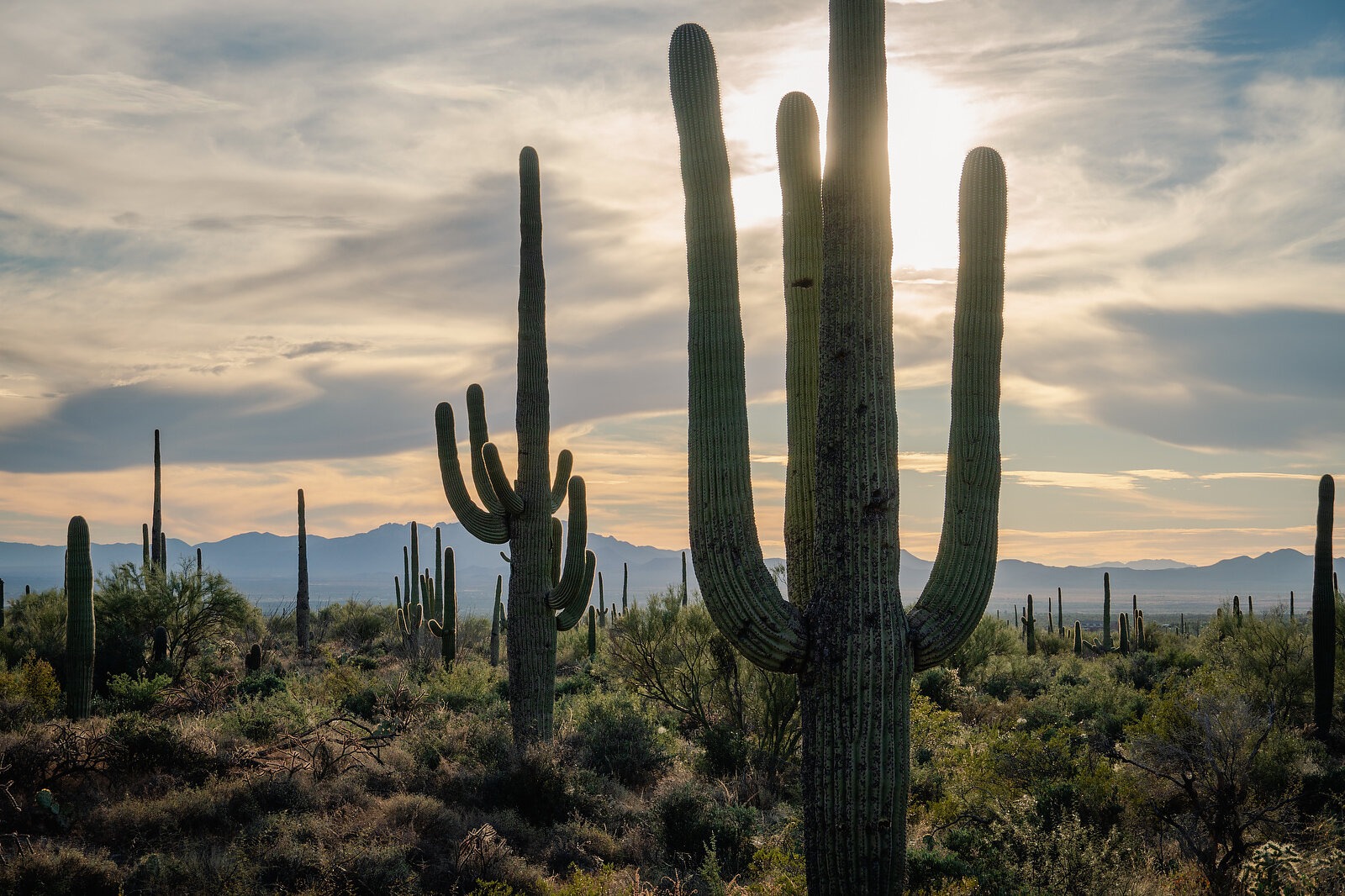
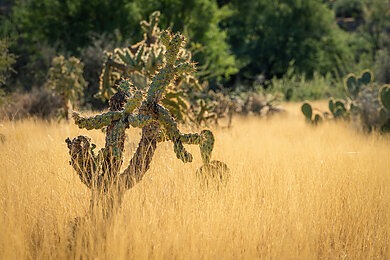
Two days later, my friend Eszter, Will and I went to the Picketpost Trailhead at the end of the AZT300 to meet Kurt at the finish. During the cooler morning hours, we rode south to see the Telegraph Fire burn zone. Eszter held the AZT300 women’s record prior to me and getting out on the trail together to experience the aftermath of the fire was cathartic. The first thing I noticed was how different a burned desert looks from a burned forest. The smaller, straggly nature of desert flora contrasts starkly with towering, scorched pines. We pedaled by palo verde, its natural green bark cooked by the blaze to an orange-brown hue. Burned cholla looked like skeletons.
And then there were the saguaros. Brown streaks ran up their corrugated skin. In some cases, they stood completely charred, their stance frozen and arms spread as if caught trying to outrun the flames. Burn scars tattooed the slopes. Now five months after the fire, the monsoon had replenished the soil and started the first round of ecological succession. A landscape once covered with vibrant Sonoran Desert species of cacti and shrubs is now blanketed in a maroon and beige monotone of grasses. While there are native grasslands in the Southwest, it is primarily nonnative, invasive types such as buffelgrass that repopulate burned areas and thrive in soil disturbed by grazing and development. Biederman, the research hydrologist, shared with me that an ongoing study in the Santa Rita mountains, just west of the Arizona Trail, is indicating a change in the distribution of grass species when precipitation events are further spread between dry periods. This is leading to an increase in exposed soil, which in turn will erode more easily under the pressure of forceful precipitation. Circling the charred remains of Picketpost Mountain, I thought back to all my bike rides that the prominent cliffy mountain had marked the beginnings and the ends of. Peering out toward the burned saguaros while blinded by the shimmer of golden grasses covering the hills, I couldn’t help but feel sad.
We returned to the trailhead and waited for Kurt to finish. He rolled in mid-morning wearing arm warmers on his shins. He looked tired but not in the way that pushing your body to its absolute limit would lead to. Mostly, he just looked worn out. The race had taken him 55 hours, more than 20 percent slower than he would normally finish. After 9 finished races on the AZT in 13 years, he reflected on this year's ride.

“Oracle Ridge is in the worst shape I’ve seen in 12 years,” Kurt said once seated in the shade with a cold can of Coke. “It will take years to restore it to how rideable and enjoyable it was [before recent wildfires].”
After bringing Kurt back to Tucson, I met up with friend and ATA Executive Director, Matt Nelson, to swap stories over lunch. Matt also endured a thrashing on a recent backpacking trip, and we commiserated over pigweed induced allergic reactions and the amount of trailwork that would follow this season. I shared my biggest realization from the trail this year, one that makes the drive, preparation, effort and disappointment all worth it—if it weren’t for the ATA and their thousands of hours of annual trail work, we would have undoubtedly lost hundreds of miles of the trail this year alone to overgrowth, fire and erosion.
“We’re putting $1 million worth of resources into the Arizona Trail this year, including cash and volunteer labor,” Matt told me. The ATA’s significant local investment highlights a broader truth about climate change: On-the-ground community leaders are critical to the future of trails and the landscapes that provide clean air, clean water and robust recreation economies. Without groups stewarding trails, and without an abundance of financial support for these groups, we will lose trails to climate change. In Arizona, this truth has been made painfully obvious during the past year.
After experiencing the impacts of drought, historic storms and devastating wildfire, I’m thinking of taking a break from racing on the AZT. Some experiences are best left as past chapters of your life. The future of the AZT is in jeopardy and it will take strong support for the ATA to prevent it from slipping away entirely as a world-class trail suitable for recreation.
HOW TO HELP:
Become a member of the Arizona Trail Association.
Join the Outdoor State with Protect Our Winters to support climate action.
Ride the AZT to experience and learn about Arizona’s desert ecosystem.

